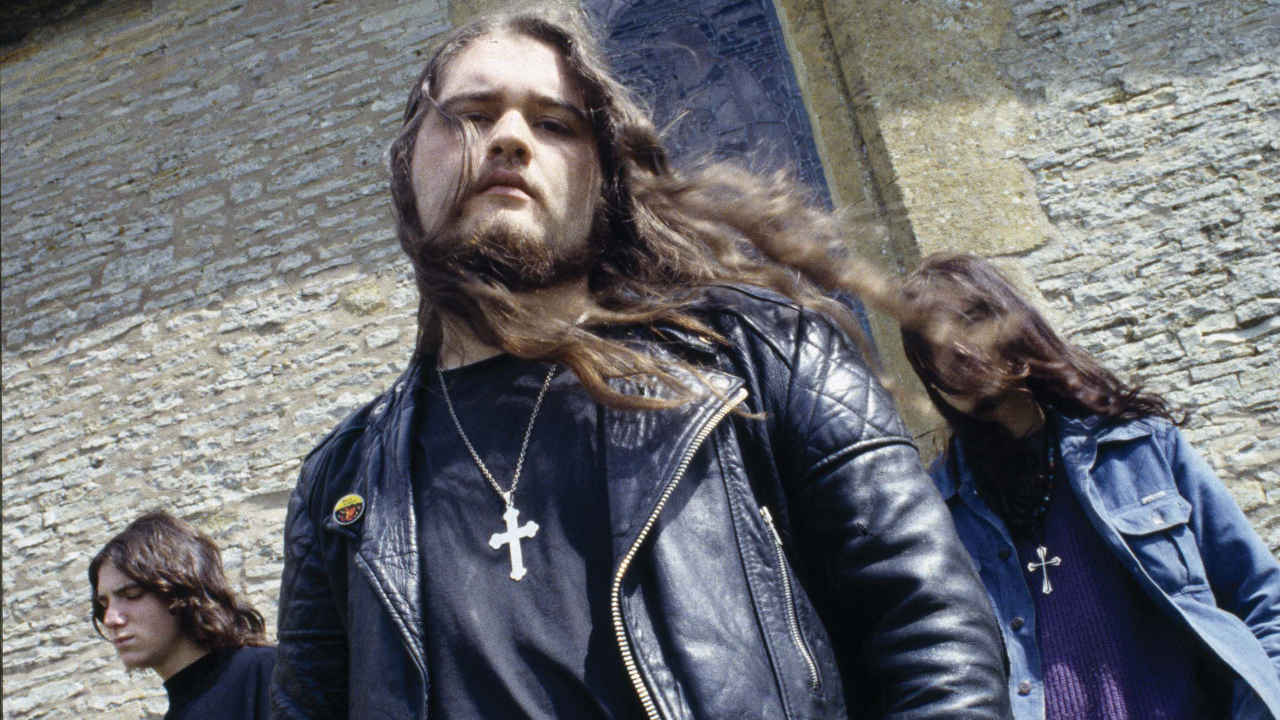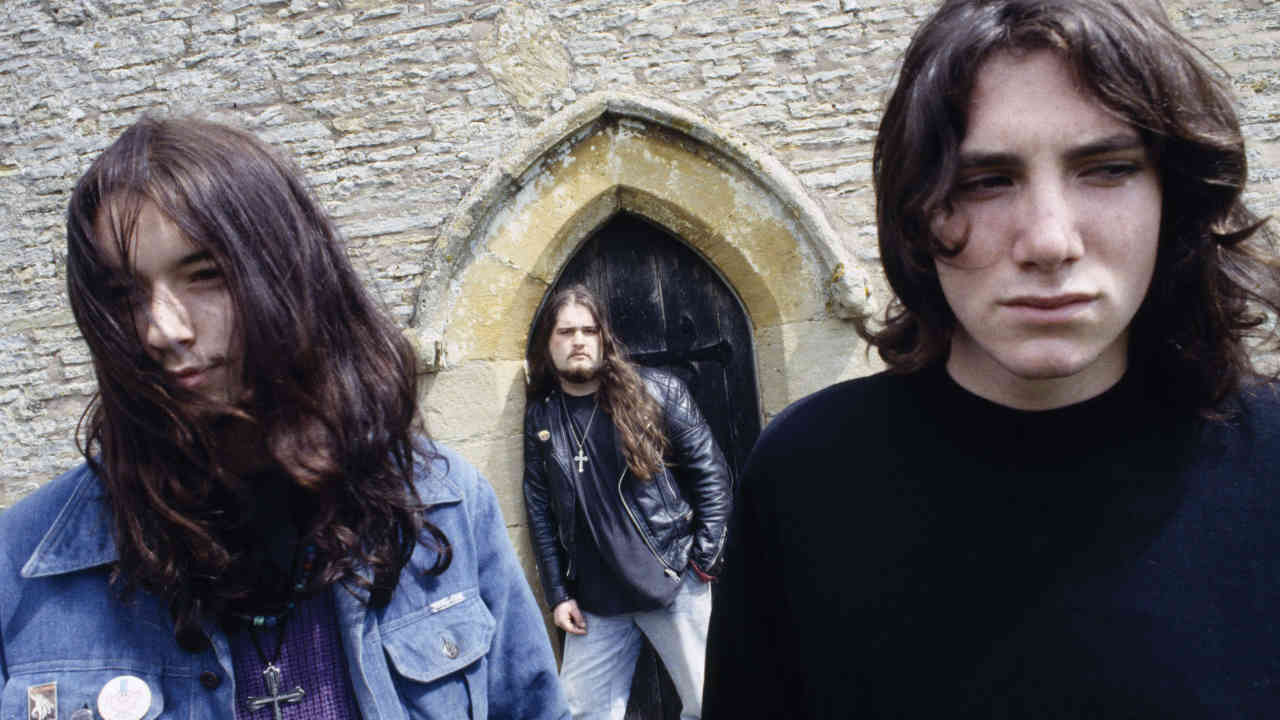“Did we do drugs in the studio? Of course. What could be better than three or four bongs before you start recording?”: how stoner-doom kings Electric Wizard made the classic Dopethrone album
Electric Wizard frontman Jus Osborn on the making of the weed enthusiasts’ classic third album Dopethrone

Electric Wizard are the sultans of sludge-infused doom, with their reputation built on on such landmark albums as 1997’s Come My Fanatics… and 2000’s epic Dopethrone. In 2007, mainman Jus Oborn took a break from the bong to look back on the making of the latter record and the epic weed intake that went into its creation.
In the world of sludge, there was always one British antidote to the onslaught from Louisiana. While this style of music – the inbred offspring of doom, stoner and southern music – was essentially an American phenomenon, us Brits could nonetheless compete in our own way, and Electric Wizard took on the fight better than anyone else over here.
The Dorset decibel dervishes were once dubbed ‘the heaviest band in the universe’ – and with good reason. They took the riffs of Sleep, Candlemass, Saint Vitus and Cathedral and twisted them into ugly new shapes . It was a musical form covered in moss, and about as commercially viable as putting snuff movies on prime time TV. Over the years, Electric Wizard’s music has set remarkable standards, without the band ever compromising to gain even the slightest of toe holds.
It started in 1993 when former Thy Grief Eternal guitarist/vocalist Jus Oborn teamed with bassist Tim Bagshaw and drummer Mark Greening to start the Electric storm. A split single with Our Haunted Kingdom (later to become Orange Goblin) was followed in 1995 by the trio’s self-titled debut album. But it was 1997’s magnificent album, Come My Fanatics… that set the seal on the Wizard influence, as they dragged their doom vines through a space rock acid bath.
This record immediately put Electric Wizard among the rarified underground elite, something reinforced by the EPs Chrono.Naut and Supercoven a year later. And then, as the new millennium dawned, we were hit with Dopethrone.
“To me, Come My Fanatics…, Supercoven and Dopethrone are the trilogy of terror. I look back with a lot of fondness on all three,” says Oborn. “With those albums, I believe we really found our mark as a band. When we did our first album, none of us had ever been into the studio before – and had no clue what to actually do. But by the time we got to do Dopethrone, we knew what was needed – or, rather I did!”
For Oborn, this record not only represents the very best from the first era of Electric Wizard, but exposed cracks in the personal relationship between the three members that were only to get a lot worse through the coming few years.
Sign up below to get the latest from Metal Hammer, plus exclusive special offers, direct to your inbox!
“If you were to have asked me back then about how we were getting along, I’d have completely denied there were any problems at all. I just didn’t wanna believe that anything was wrong. Now I can admit to myself that our relationship was very rocky. The trouble was that Mark and Tim had ideas for this band that simply didn’t fit what we were about. It may amaze fans, but they wanted to introduce Nirvana and rap influences. That was just crap. What had they gotta do with Electric Wizard? Then things got very heated in the studio. I think we were all having a go at each other! So, it really ended up with me being the most involved of anyone as far as the recording process went.”

Most bands operate on the principle that, while they enjoy a possible reputation for being outrageous, drug-taking zombies, there’s nevertheless a degree of professionalism in the studio. Not Electric Wizard.
“Did we do drugs in the studio? Of course. As far as the three of us were concerned, what was the point of being in a band if you couldn’t indulge? That’s one of the perks. What could be better than three or four bongs before you start recording? For us, it was absolutely essential.”
There was a three-year gap between Come My Fanatics… and Dopethrone. But this wasn’t exactly a planned situation. Merely the product of minds who refused to conform to schedules or to confirm timetables.
“This isn’t pop music, where there’s commercial pressure to deliver all the time. This is underground metal where, if you’re lucky, you might sell one or two copies,” says Oborn, at the mere thought of planning ahead. “Lee Dorrian, who owns the Rise Above label [to which Electric Wizard were signed] drove us mad, constantly nagging about when we’d go into the studio to start doing what was to become Dopethrone. But, for us, it was always a case of when we’re ready we’ll do it. Not before. We were never one of those bands who’d sit down, write a load of songs, demo them up, and then book studio time. It could never be that simple.
“Honestly, it’s tough to explain how we worked. But all of us thrived on jamming out ideas. Sometimes they’d lead to proper songs. Other times… to nothing. We had only had three tracks fully written for the album when we went into the studio: Dopethrone, Funeralopolis and We Hate You… the first one was based on a story that I’d heard, about someone who had a sofa completely made out of dope. And the third one, well, that was inspired in a way by Ozzy. He was always going about how much he fucking loved everyone, so we thought it would be great to go and do the opposite.
“When we finally realised that it was time to do the new record, those were all we had ready. A track like [epic album centrepiece] Weird Tales, for instance, came about purely in the studio. And it was all the better for it. Being so new, it was a lot fresher than the old shit we had! I still remember when I called up Lee and told him that we were ready to record, his reply was, ‘About fucking time!’”
Oborn was responsible for the lyrics on Dopethrone, and his inspiration was a combination of hallucinogens and early 20th Century fantasy/horror author H. P. Lovecraft, whose most famous creation was tentacle-faced intergalactic god-monster Cthulhu. “I really got so many ideas from his stories. I’d sit there, out of my brain, reading his stuff, and extrapolating on what he’d written. It was amazing. The irony was that he wrote while straight, influencing someone like me, who certainly was not.”
If Oborn certainly enjoyed his mental vacations, when it came to the nitty gritty of studio grime, he was the man who got his hands dirty.
“It was our producer Rolf Startin who understood the technology of the time. But I was the one from the band who was most involved. We were in the studio [Chuckalumba, in Dorset] for a few months. Not all at once – we’d do a few days and then take a brief break – but there were neither time nor budget constraints as such. Everyone understood that when the record was ready, then it would be delivered. Like I said, we weren’t dealing with chart music here, so if we missed a deadline, who cared?
”I learnt so much from Rolf that now I’d feel able to produce another band. However, back in 2000, I concentrated on coming up with the concepts as to how we should sound. There’s a lot of intricacy and subtlety on the record. A number of sonic layers that had to be built up. If you listen carefully, there’s more going on that perhaps we get credit for.
“I got a lot of ideas from watching Pink Floyd videos, especially the way they set up their microphones. I spent ages working out the best way to mic up my amps. It was very important to the way we sound on the record. The other two guys weren’t as heavily involved as me, but that wasn’t a problem at the time. As I said before, it was only later on that I realised this was the beginning of the end. Part of the trouble was that all three of us were going through tough personal situations. We all had full-time jobs, but were in the process of giving them up, which brought extra financial burdens.”
Oborn doesn’t fully recall exactly how they settled on the album, although he’s fairly convinced that nothing was actually decided until after recording was done and dusted.
“I think it was my idea, but I believe we left the choice until the last minute. But I came up with the cover idea [a Satanic figure getting stoned]. I did a basic line drawing, but it was Tim’s brother [Tom Bagshaw] who conceived the final version that we used. It has a nightmarish, Lovecraftian, early 1970s quality to it, which was exactly what I wanted to capture. I suppose my attempt would have done, but Tom’s was a lot better. Besides, I didn’t feel it was right that my name should be all over the album!”
It was also Oborn who came up with the cult slogan that was used on the sleeve: phrase ‘Legalise Drugs And Murder’. Inevitably, its origins lie in a combination of two things Wizard are known for; drugs and humour.
“Yep, that was my nonsense,” says Oborn. “I think I got really off my face one day and said something like, ‘Let’s get stoned and kill everyone’. That just developed into what we used on the album. What we were after was a catchphrase that summed up Dopethrone – and this seemed to fit.”
Dopethrone was released by Rise Above in October 2000, to cricitical acclaim and cult – if not mainstream success – and all seemed to be going the band’s way. The internal rifts were temporarily put on hold, at least for another couple of years (Greening and Bagshawe left after 2002’s Let Us Prey album). Wizard themselves continued to put out a string of classic, weed-wreathed albums, but for Oborn, Dopethrone represents the true spirit of the band.
“I feel we captured something special. Sure, there are flaws with the record, and I know we could have made it a lot better. But this is where Electric Wizard should be.”
Originally published in Metal Hammer issue 162. Updated in July 2024
Malcolm Dome had an illustrious and celebrated career which stretched back to working for Record Mirror magazine in the late 70s and Metal Fury in the early 80s before joining Kerrang! at its launch in 1981. His first book, Encyclopedia Metallica, published in 1981, may have been the inspiration for the name of a certain band formed that same year. Dome is also credited with inventing the term "thrash metal" while writing about the Anthrax song Metal Thrashing Mad in 1984. With the launch of Classic Rock magazine in 1998 he became involved with that title, sister magazine Metal Hammer, and was a contributor to Prog magazine since its inception in 2009. He died in 2021.

